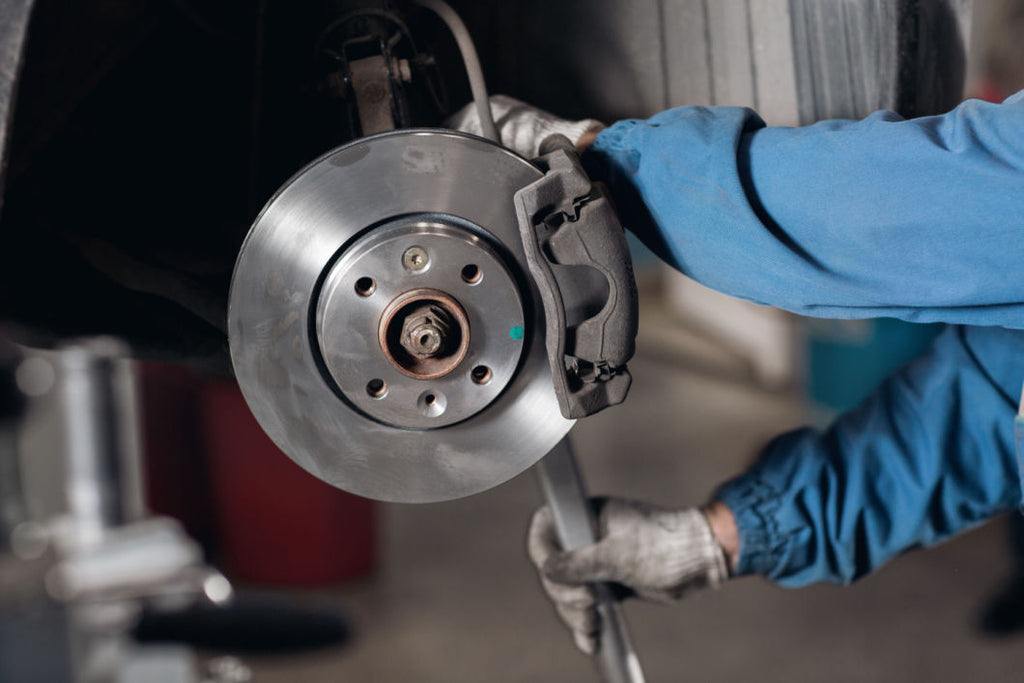Uneven Brake Pad Wear: Causes And Remedy
While brake pad wear can be a common problem witnessed by many car users, it is still very important to fix it as soon as possible. The disc brakes that bring a car and vehicle to a stop are made of brake calipers, brake pads, and the rotor (a metallic disc). The brake pads clasp and press the rotor or the metallic disc, thereby producing friction that is responsible for delivering stopping power. The brake pads will be subjected to friction and pressure constantly and will ultimately wear down. However, in some cases, there may be uneven brake pad wear that may have many different causes.PATTERNS OF UNEVEN BRAKE PAD WEAR
In some cases, the brake pad wear is visible easily when you shine a flashlight toward the brake calipers. However, you require a closer look at the thickness of the brake pad in other cases. There can be different types of wear patterns for the brake pads.
WEAR OF INNER PADS: inner pads may undergo greater wear commonly for the floating caliper systems, as they are located close to the body of the vehicle. However, the difference between the pair and the rotor should be at most 3 millimeters.
WEAR OF OUTER PADS: when the outer pad is rubbing constantly with the motor, it may wear faster than the inner pad, something which is rare.
TAPERED WEAR: such wear may be common for certain vehicle models and the manufacturers can provide information on how much of the tapered wear is acceptable. It is a condition when the wear on the brake pad has a " tapered" or a "wedge" shape due to excessive mobility of the caliper or due to the seizure of a pad within the bracket.

LIKELY CAUSES OF YOUR BRAKE PAD'S UNEVEN WEAR
Some of the most common causes due to which a brake pad may have uneven wear on its surface are listed below.CORRODED/FAULTY SLIDE PINS: the brake assembly has slide pins (operate in a pair) that may wear over time. It may happen that while one of them seizes, the other pin continues to operate. When one of the sides works fine while the other pin is seized, there will be tapered or uneven wear on the brake pad.
STICKY/FAILED PISTONS: sometimes rust and debris may form within the brake caliper so that it does not slide to the sides. When the problem occurs, the caliper will not apply pressure on the brake disc when you press and apply the brakes. Sometimes the caliper will not engage and work at all while at other times it will not assume its original position.
WHEEL MISALIGNMENT: When the vehicle's wheels are misaligned, the front wheels will start to pull over any of the sides whenever you apply brakes. One side of the brake pad will suffer from greater wear when compared to the other due to uneven braking.
FIXING THE PROBLEM
Routine inspection, maintenance, and care of a car and vehicle ensure that any problems are found beforehand and do not aggravate to cause a major issue. However, you must make your vehicle undergo brake inspection and even the replacement of brakes when:- The car starts to shake when breaks are applied.
- Squealing during the pressing of the brake pedal.
- A scraping sound of metal (shows that the brake pads are won out and the rotor is coming in contact with their metal plate).
An expert mechanic at the garage may provide you with valuable advice on the real cause of uneven brake pad wear. They can also suggest quality auto parts distributors who can offer genuine and original auto parts for your car/vehicle at a reasonable price. You mustn't delay the replacement of an important part such as the brake pad of a car, as it may impact its safety directly.
CONCLUSION
Fortunately, leading online aftermarket auto parts sellers, including Parts Max the right auto parts to ensure that your vehicle stays in good shape and the risk of breakdowns and accidents is prevented. Parts Max is the largest distributor of auto parts in South Florida and offers "next business day delivery" for all orders from Broward, Miami Dade, and Palm Beach.
You can also visit our physical and retail store in South Florida for aftermarket auto parts.


